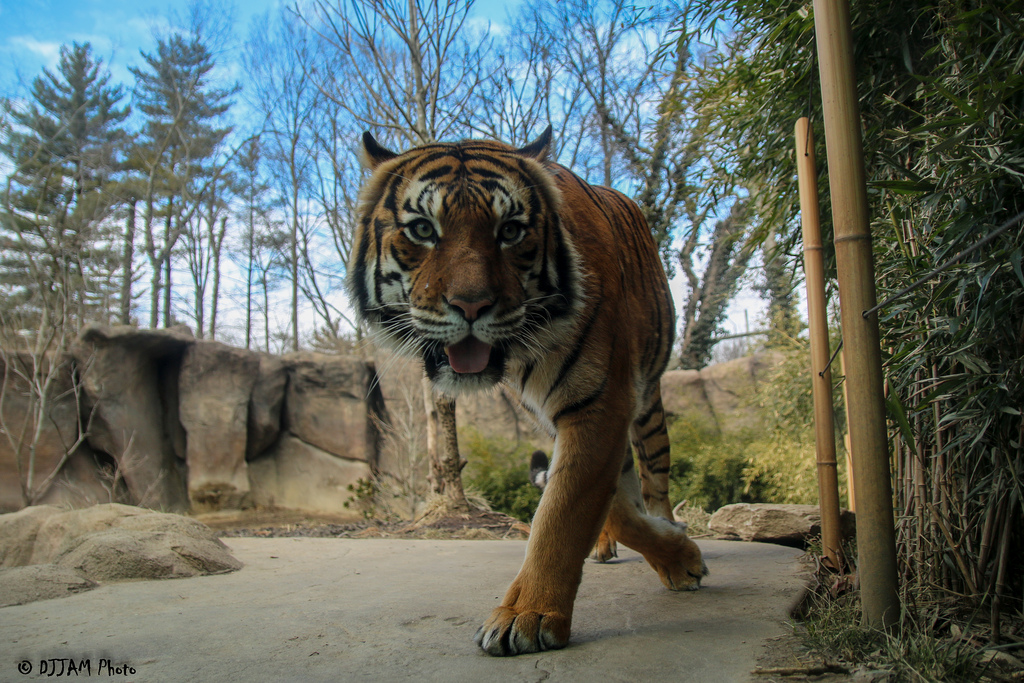Prestigious Grant Funds Cincinnati Zoo Scientists’ Work to Save Imperiled Cats
National Leadership Grant Awarded by the Institute of Museum and Library Services
 CINCINNATI, OH (August 19, 2020) – Scientists at The Lindner Center for Conservation and Research of Endangered Wildlife (CREW) at the Cincinnati Zoo & Botanical Garden working in partnership with scientists at Omaha’s Henry Doorly Zoo and Aquarium (OHDZA), are poised to address the reproductive challenges of managing sustainable zoo populations of tigers, snow leopards, Amur leopards, and jaguars with a goal to ensure their presence in zoos for years to come. Thanks to a National Leadership Grant from the Institute of Museum and Library Sciences (IMLS), they will get that chance.
CINCINNATI, OH (August 19, 2020) – Scientists at The Lindner Center for Conservation and Research of Endangered Wildlife (CREW) at the Cincinnati Zoo & Botanical Garden working in partnership with scientists at Omaha’s Henry Doorly Zoo and Aquarium (OHDZA), are poised to address the reproductive challenges of managing sustainable zoo populations of tigers, snow leopards, Amur leopards, and jaguars with a goal to ensure their presence in zoos for years to come. Thanks to a National Leadership Grant from the Institute of Museum and Library Sciences (IMLS), they will get that chance.
“We’re thrilled to receive this funding and hope that it will result in the continued existence of sustainable populations of these imperiled large cats in zoos,” said CREW Theriogenologist and project director for this grant, Dr. Lindsey Vansandt. “The maximum amount for an IMLS National Leadership Grant is $1,000,000 and we were awarded $770,601 for a three-year funding period! We are grateful for this support and look forward to collaborating with our research partners at OHDZA and many other AZA accredited zoos across the nation that have agreed to participate in this effort.”
As wild populations dwindle, cats in zoos become an ever more critical component of conservation efforts, serving as ambassadors for their wild cousins, helping to educate and engage the public in conservation actions, providing an invaluable research resource to more readily study their behavior and physiology, and serving as an assurance population to protect against species extinction. However, the populations of cats in North American zoos are facing significant challenges that could compromise their contribution to conservation efforts.
 “Long-term sustainability goals cannot be achieved with natural breeding alone,” said Vansandt. “The development of effective, efficient assisted reproductive technologies (ART) will be critical to ensure the viability of these populations. Semen banking and artificial insemination (AI) are the most readily applicable ARTs for management of felid populations, but differences in physiology necessitate fundamental research in each felid species before the potential of ART can be realized.”
“Long-term sustainability goals cannot be achieved with natural breeding alone,” said Vansandt. “The development of effective, efficient assisted reproductive technologies (ART) will be critical to ensure the viability of these populations. Semen banking and artificial insemination (AI) are the most readily applicable ARTs for management of felid populations, but differences in physiology necessitate fundamental research in each felid species before the potential of ART can be realized.”
The IMLS grant will fund the advancement of AI procedures and semen banking for the management of imperiled big cats in U.S. zoos. Grant funds will also be used to develop more efficient methods for AI and to increase the scientific capacity of the zoological community through advanced training in ART.
Despite the reproductive challenges faced by zoo populations and the need for ART, the Cincinnati Zoo is only one of 10 accredited zoos in the U.S. that have reproductive biologists on staff. Over the past 20 years, scientists at CREW have conducted multiple studies which have improved natural breeding success, advanced the use of ART for genetic management, and facilitated linkage of wild and zoo populations. The combined expertise of these accredited institutions is intended to significantly advance the understanding of reproductive biology in four species of cats and accelerate the development of effective ART protocols for their conservation.

